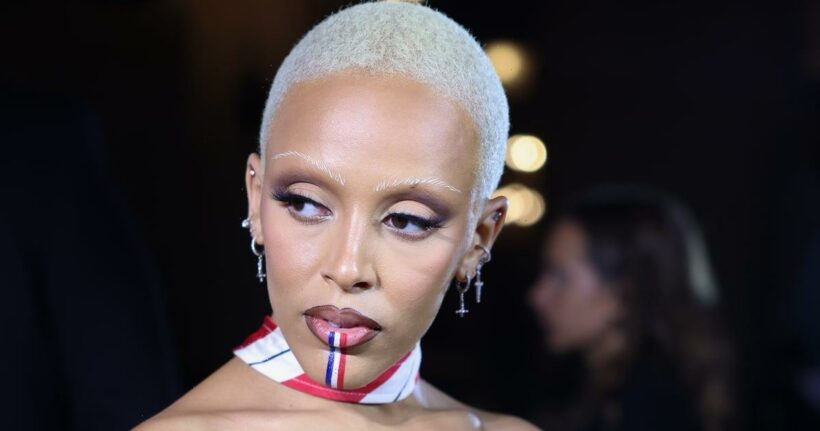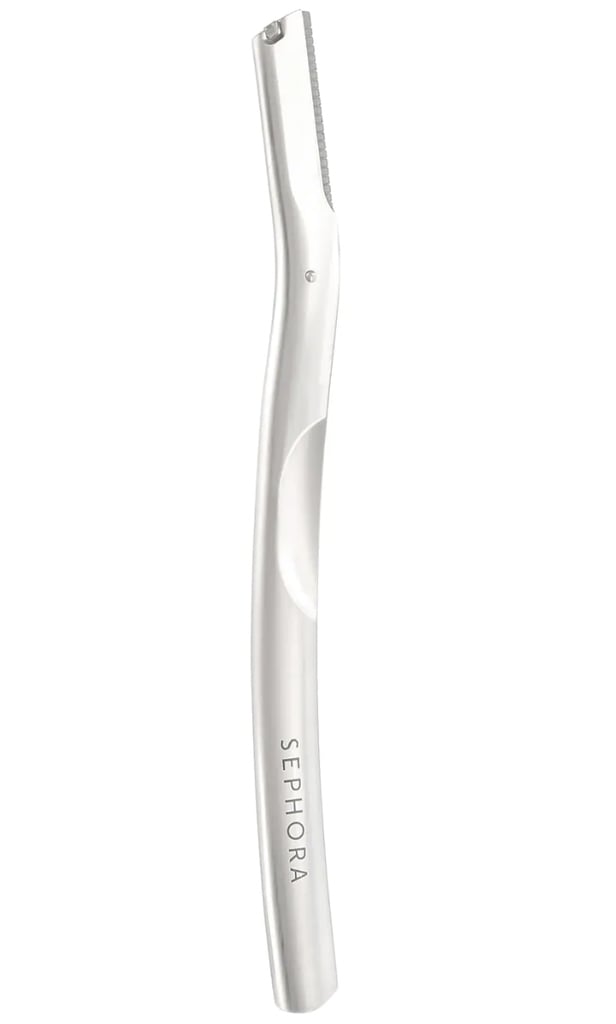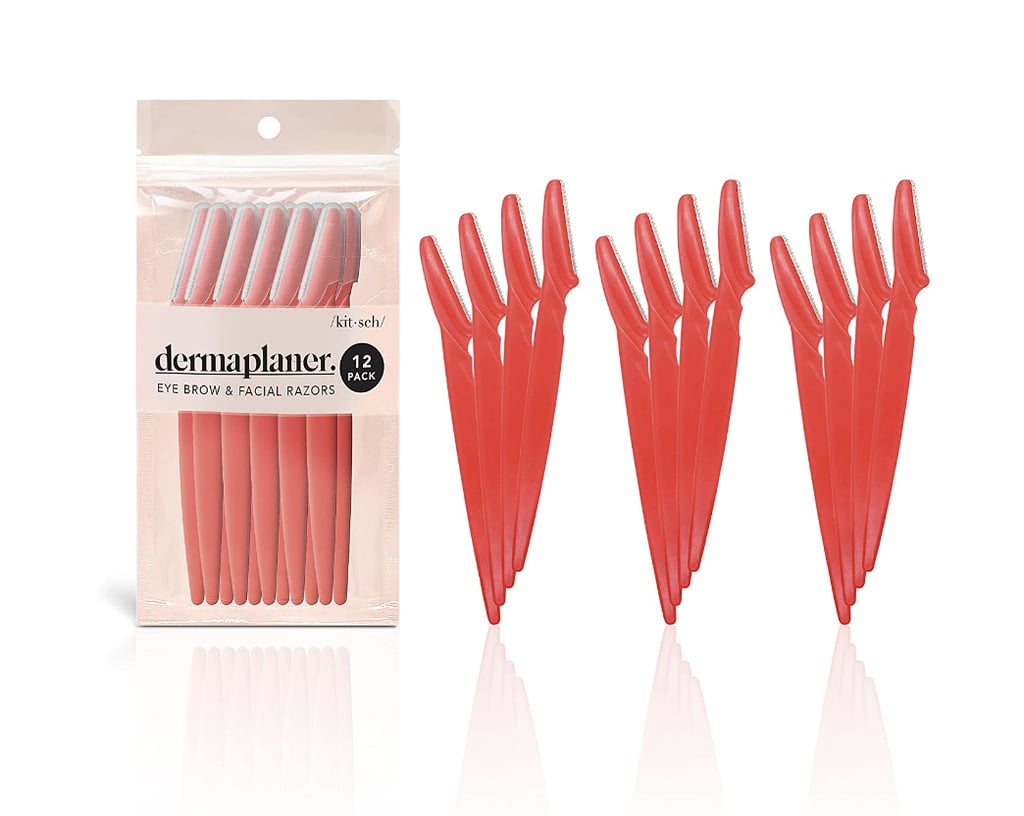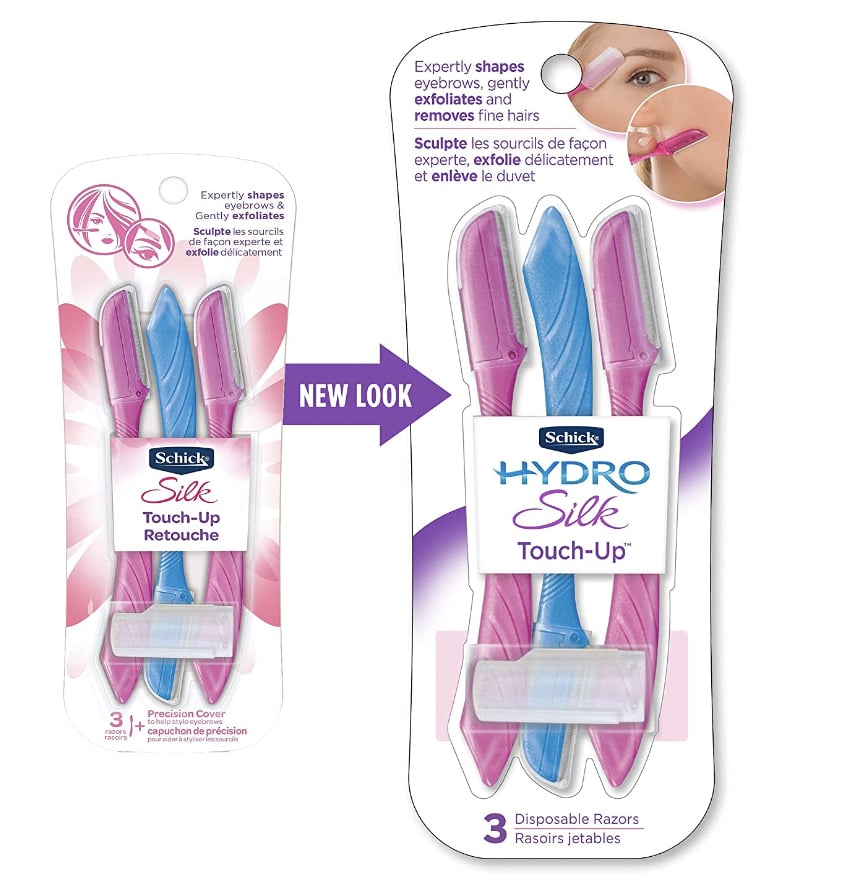Image Source: Getty/Pierre Suu
- The shaved eyebrows trend is gaining popularity, thanks to many celebrities.
- If you’re considering shaving your eyebrows, there are some things you should think about first.
- Learn if your eyebrows grow back thicker, what tools you need for the job, and more, from two pros.
The “invisible” eyebrow trend is alive and well, mainly thanks to Gen Z. Unconventional beauty trends such as this, plus others like the nose-bridge makeup and aura eyeshadow, are thriving, and picking up steam. But while most people opt to dye or bleach their eyebrows — we’re looking at you, Noah Cyrus, Nicola Peltz Beckham, Dove Cameron, and Willow Smith, to name a few — some people are going a completely different route to get the look and shaving them off, instead.
In August on Instagram Live, Doja Cat shaved her eyebrows in front of her fans, saying, “I feel like I was never supposed to have hair anyway” as she did it. In the months following, she proceeded to decorate the space where her brows used to be with various makeup designs. Now, it’s not uncommon to find tiny white flowers, cheeky smiley faces, and other neon graphic designs in place of hair on the singer’s face.
If you’re inspired by Doja’s boldness and interested in shaving your eyebrows, there are a few things you should know before picking up the razor. Keep reading to do a little research before taking the plunge.
Is It Safe to Shave Your Eyebrows?
The first question that might cross your mind may be whether it’s even safe to shave off your brows, and the answer is yes, generally. “It is safe to shave your eyebrows as long as you do it with care and use the right tools and products and clean them properly,” Fides Baldesberger, brow expert and CEO of Rubis Tweezers, tells POPSUGAR.
But before you grab your razor, Baldesberger recommends you really take time to consider your choice. “It’ll definitely change your entire look, so it’s not something to take lightly,” she says.
It’s important to keep in mind that the skin underneath your brows is sensitive. “This means there’s an increased risk of nicks, cuts, and bleeding,” Baldesberger says. Additionally, “potential risks of shaving your brows include trauma to the area that could lead to scarring, infection, and an acne-type eruption,” board-certified dermatologist Lauren Penzi, MD, says. That’s why having the right tools is an absolute must (more on that ahead).
Do Eyebrows Grow Back After Shaving?
Many of the top questions surrounding the shaved eyebrow trend are concerned with whether the hair will grow back. Much like the hair on your legs, underarms, or head, it will. “When you shave anything, you’re not removing the hair from the root,” says Baldesberger. “Instead, you’re cutting the hair at the surface where it breaks through the skin.” As long as you’re not damaging the hair follicle, which is located at the root, via plucking or waxing, it will grow back with time — they just might look a little different at first.
“You’ll see stubble very quickly because you’re not removing the hair in its entirety. Regrowth will appear coarse and stubble-like. Hairs are likely to be spiky and grow directly out of the skin, instead of laying flat, which may cause an unnatural look,” says Baldesberger.
It’s a myth that hair grows back thicker after you shave it, but there’s a reason this is so widely believed. “The ends of the hairs will lack their natural taper and instead be more blunt,” says Dr. Penzi. “This can cause the brows to appear thicker than their initial state.”
Luckily, this is only temporary during the initial regrowth phase. “If done correctly, there should be no long-term damage to your brows,” Dr. Penzi says.
How Long Does It Take For Eyebrows to Grow Back?
The amount of time it takes for your eyebrows to grow back after you shave them varies from person to person. “Generally speaking, though, you’ll notice faster regrowth after shaving your brows than you would after removing hair from the root by waxing or plucking,” Baldesberger says. You’ll experience stubble a few days after shaving your brows, but it can take up to six weeks for them to return to their previous state.
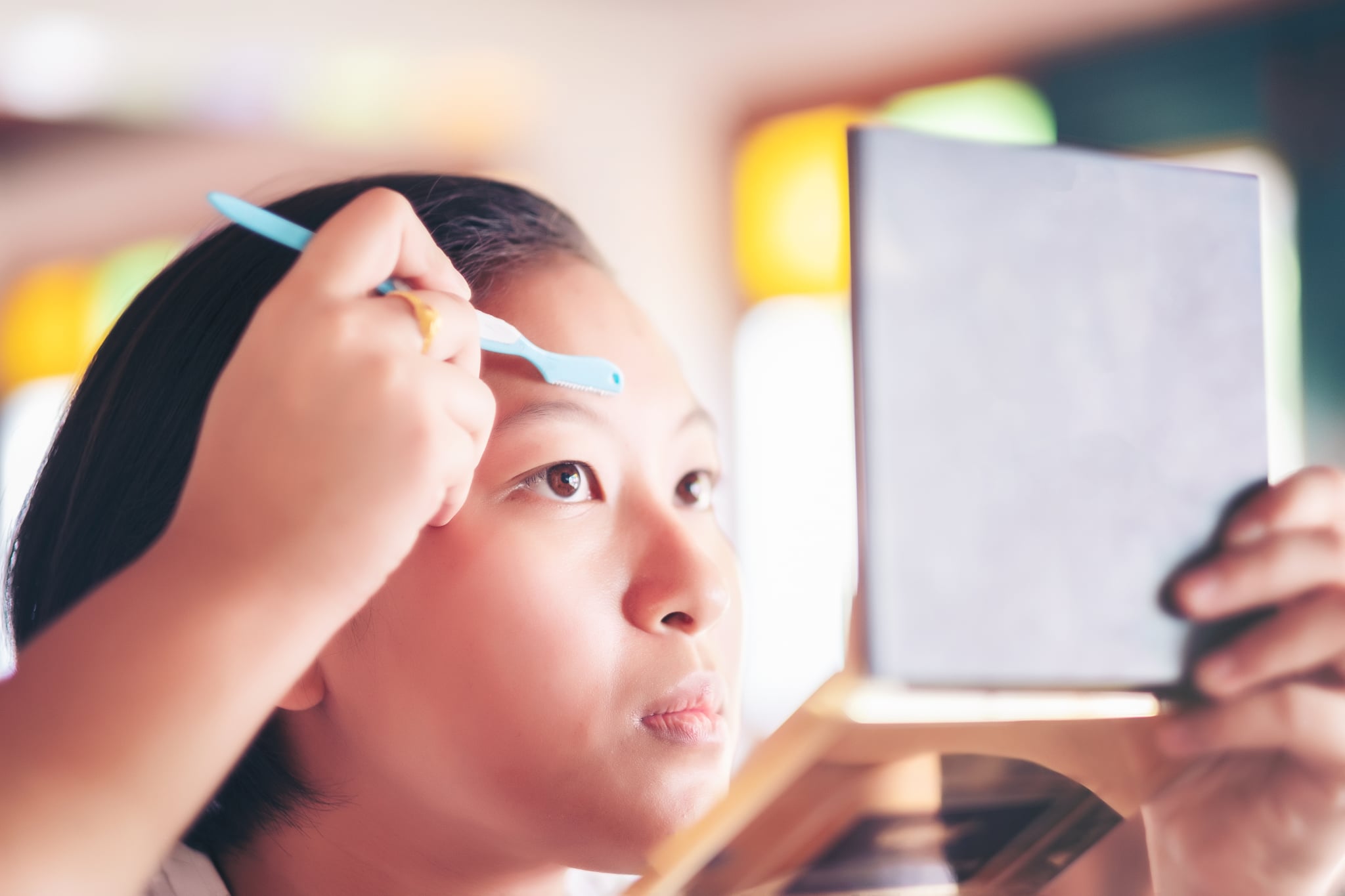
What Tools You Need to Shave Your Eyebrows
Many people wonder if you can shave your eyebrows with a normal razor just as you may your legs, and while it can work, it’s not recommended. “For this job, you’ll need an eyebrow-specific blade,” says Baldesberger. “Regular razors are often too large and can be a bit too rough for the facial skin.”
Instead, you’ll want to get a new small facial blade, like a dermaplaning razor. “Avoid using an old or used razor, as these blades are likely more dull and will not have as optimal an outcome as a fresh, new razor,” says Dr. Penzi. We like the Sephora Collection Metal Facial Razor ($18), Kitsch Dermaplaning Tool Set ($14), and the Schick Hydro Silk Touch-Up Multipurpose Exfoliating Dermaplaning Tool ($6).
“Also be sure to use a small amount of shaving cream or gel that will decrease the chance of trauma to the hair follicle while shaving and prevent any cuts or bleeding,” says Dr. Penzi. Just keep in mind the skin on your face is much more sensitive than the skin on your body, so you’ll want to do a patch test before diving in.
How to Shave Your Eyebrows
Once you’ve decided that the shaved eyebrows trend is right for you and you’ve gathered all of the necessary tools, you’re ready to get started.
Step 1: Clean the Area
“Before shaving your eyebrows, be sure to gently clean the area with soap to avoid any introduction of bacteria into the hair follicles that could lead to infection,” says Dr. Penzi.
Step 2: Begin Shaving
Holding the skin taut will help you get a clean shave. “You’ll want to use your nondominant hand to hold your skin and your dominant hand to shave,” says Baldesberger. Then, begin gently shaving the hairs in light, short strokes. Both experts recommend shaving in the direction of hair growth and not making multiple passes over the same section to avoid irritation.
If you have any textured areas on the skin, like blemishes or moles, avoid shaving over them and try plucking the hair in those spots instead. Shaving these areas “can cause irritation and infection,” Baldesberger says.
Step 3: Moisturize the Area
Lastly, once you’ve shaved off all the hair, you’ll want to treat the skin with a moisturizer to help lower your risk of irritation. Baldesberger recommends using a topical gel with aloe vera to soothe the area.
Source: Read Full Article
